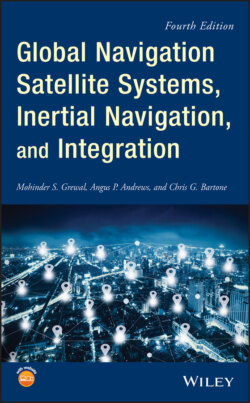Читать книгу Global Navigation Satellite Systems, Inertial Navigation, and Integration - Mohinder S. Grewal - Страница 16
1.1.1 Navigation‐Related Technologies
ОглавлениеIn current engineering usage, the art of getting from A to B is commonly divided into three interrelated technologies:
Navigation refers to the art of determining the current location of an object – usually a vehicle of some sort, which could be in space, in the air, on land, on or under the surface of a body of water, or underground. It could also be a comet, a projectile, a drill bit, or anything else we would like to locate and track. In modern usage, A and B may refer to the object's current and intended dynamic state, which can also include its velocity, attitude, or attitude rate relative to other objects. The practical implementation of navigation generally requires observations, measurements, or sensors to measure relevant variables, and methods of estimating the state of the object from the measured values.
Guidance refers to the art of determining a suitable trajectory for getting the object to a desired state, which may include position, velocity, attitude, or attitude rate. What would be considered a “suitable” trajectory may involve such factors as cost, consumables and/or time required, risks involved, or constraints imposed by existing transportation corridors and geopolitical boundaries.
Control refers to the art of determining what actions (e.g. applied forces or torques) may be required for getting the object to follow the desired trajectory.
These distinctions can become blurred – especially in applications when they share hardware and software. This has happened in missile guidance [1], where the focus is on getting to B, which may be implemented without requiring the intermediate locations. The distinctions are clearer in what is called “Global Positioning System (GPS) navigation” for highway vehicles:
Navigation is implemented by the GPS receiver, which gives the user an estimate of the current location (A) of the vehicle.
Guidance is implemented as route planning, which finds a route (trajectory) from A to the intended destination B, using the connecting road system and applying user‐specified measures of route suitability (e.g. travel distance or total time).
Control is implemented as a sequence of requested driver actions to follow the planned route.
